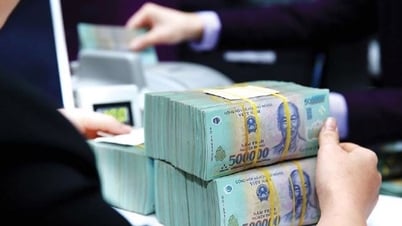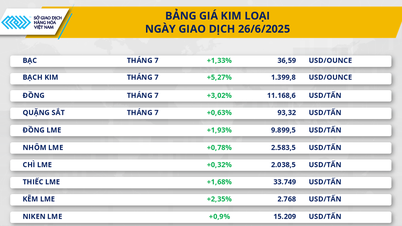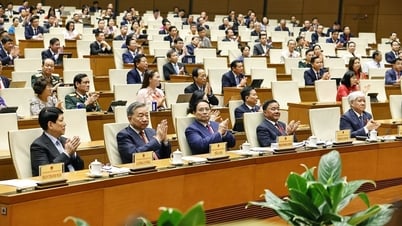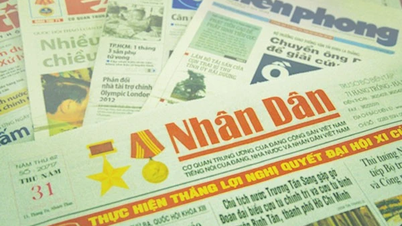From the Golden Age to the Crises
Before 2012, “goldenization of the economy ” was a popular concept. Gold was present in every transaction: buying and selling real estate, cars, borrowing... With a loose legal mechanism (Decree 174/1999/ND-CP and Decision 432/2000/QD-NHNN), non-monetary gold (gold bars, jewelry) was freely circulated as a commodity, and at the same time became a tool for mobilizing and lending at commercial banks.
A series of banks have developed gold credit, mobilized physical gold and accounts, and even participated in opening gold trading floors from official to unofficial. This has “monetized” gold, making it a part of the national monetary and credit system, alongside VND and USD.
Everything really fell apart after the global financial crisis in 2007. Fluctuations in gold prices and exchange rates caused many banks to face a loss of liquidity, having to buy back gold at high prices to pay depositors. In 2007, the price of SJC gold was around 12.5 million VND/tael; by 2011, it had reached 42.6 million VND/tael, an increase of nearly 3.5 times. This caused at least 5 banks to fall into crisis, the gold market to be in chaos, and foreign exchange rates to get out of control.
In addition, due to the difference in domestic and foreign gold prices, the smuggling of raw gold is common, causing an imbalance in foreign currency supply and demand. The State Bank of Vietnam (SBV) has had to intervene many times, selling foreign currency to stabilize the exchange rate.
Decree 24 is a management milestone
Faced with the chaos, on April 3, 2012, the Government issued Decree 24/2012/ND-CP on the management of gold trading activities. This document marked a major turning point: the State became the only entity allowed to import and export raw gold, the SJC gold bar brand was nationalized, gold bar trading organizations had to be licensed, and especially gold credit at banks was completely banned.
The main objectives include: Resolving the lack of gold liquidity in banks; Eliminating the “goldification” of the credit system; Stabilizing the gold market and foreign exchange rates.
Since 2013, the State Bank has been auctioning gold bars to resupply banks with liquidated status. By June 30, 2013, all previously mobilized gold had been processed, and gold credit officially ended.
The results are clear: the gold market is stable, no longer has extreme speculative fluctuations; the USD/VND exchange rate is also gradually stabilizing, helping to control inflation and stabilize the macro economy.
In addition, the correlation between gold prices and foreign exchange rates has also gradually weakened, demonstrating the positive impact of the policy.
Since 2020, after the Covid-19 pandemic, the global economy has been in turmoil, geopolitical conflicts and strategic competition have caused world gold prices to continuously break records. In Vietnam, despite management measures, the price of SJC gold bars still fluctuates strongly and is often 3-5 million VND/tael higher than the world gold price, even reaching over 14 million VND/tael at times.
The unusually high domestic gold price has posed three major challenges: The price difference creates conditions for speculation, hoarding, and gold smuggling; Causes psychological insecurity, increases the accumulation of "dead" assets, not put into production circulation; Puts pressure on exchange rates and foreign exchange reserves in the context of an economy still dependent on imports.
At the same time, many opinions say that Decree 24 has "completed its historical mission" and needs to be changed to better suit current conditions, especially regarding gold imports and the ability to re-establish a legal and transparent gold trading floor.
A core issue now is how to mobilize gold resources that are outside the banking system to serve economic development. It is estimated that Vietnamese people may be holding about 500 tons of gold, equivalent to hundreds of thousands of billions of VND. This is a large resource, but it is currently almost "frozen".
The former Deputy General Director of a state-owned commercial bank said that with the scale of foreign exchange reserves still low and the pressure of import increasing, Vietnam needs a solution to “activate” the amount of gold stored by the people. However, the prerequisite is to have transparency in terms of law, technology and the monitoring system.
Faced with fluctuations in world gold prices and the growing gap between domestic and international prices, the question is: How to effectively manage gold and exploit this resource to serve economic development?
A feasible solution is to allow the establishment of a physical gold trading floor controlled by the State, to ensure publicity, transparency, anti-speculation and control of cash flow. If gold transactions are brought into the official financial system (similar to the model of some countries such as Singapore, Thailand...), they can help increase budget revenue and at the same time help control the amount of gold in circulation.
In addition, it is necessary to review tax and fee policies, regulations on gold ownership and trading to create a more attractive legal corridor for people and businesses to officially participate in the gold market.
Currently, there are three main groups of views on gold market management: Maintain the status quo and continue to tighten management. This view believes that the gold market is relatively stable, does not need major changes, only needs to strengthen supervision to limit speculation and hoarding.
Another viewpoint is to loosen the control, allow gold imports again and open gold trading floors. This group proposes that instead of letting the domestic and world gold prices differ too much, gold imports should be allowed according to demand to balance supply and demand and stabilize prices.
Finally, comprehensive reform towards controlled marketization, as many developed countries have done. That is, both opening up and establishing transparent market regulation tools, modernizing the monitoring system, and managing gold transactions like with the stock or foreign exchange markets.
In all three perspectives, the common point is to emphasize the role of information transparency, modernizing the monitoring system and moving towards a gold market that operates publicly, effectively and is resistant to manipulation.
The Vietnamese gold market cannot operate effectively without transparency in terms of gold reserves, gold volume in the population, import mechanisms, price listing and distribution. In the context of Vietnam promoting digital transformation, building a national gold management data system, along with a digital trading platform, can be a necessary step to bring gold “from the kitchen to the market”.
Decree 24 still retains its historical value, but it is clearly time to adjust it to suit new realities. A transparent and effective gold market not only helps stabilize the macro economy, but is also a stepping stone to unlock gold resources for growth, in line with the goals of the digital economy, modern and integrated financial market.
Source: https://baodaknong.vn/thi-truong-vang-van-hanh-hieu-qua-khong-the-thieu-minh-bach-255046.html

































































































Comment (0)